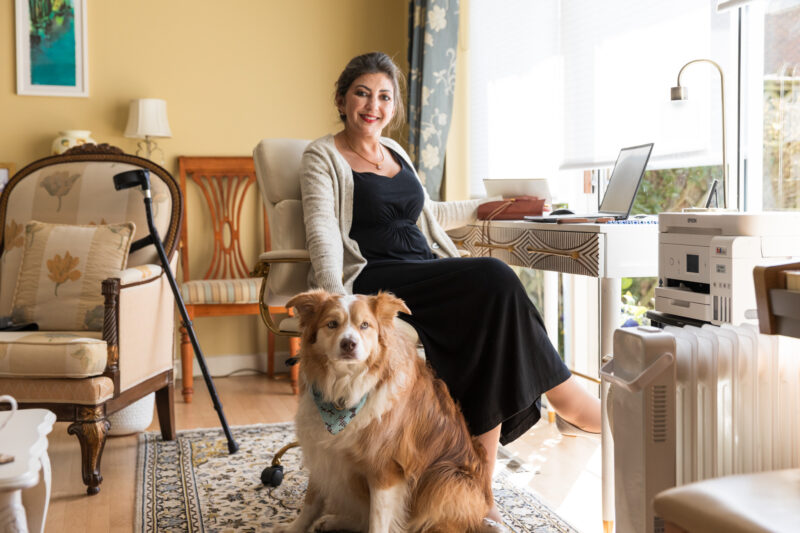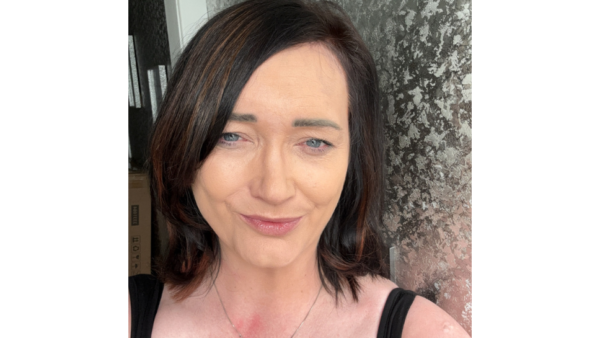Our condition-specific alert cards provide crucial information for emergency healthcare professionals treating patients with muscle wasting conditions.
Charcot-Marie-Tooth disease (CMT)
Charcot-Marie-Tooth disease (CMT) is also known as hereditary motor and sensory neuropathy (HMSN). It is a group of slowly progressive conditions that affect a person’s peripheral nerves. These nerves control movement, sense, touch, and feelings like pain. There are two main types of CMT – type 1 and type 2.
Damage in the peripheral nerves causes weakness and wasting in the muscles of the feet, lower legs, forearms, and hands. As the condition progresses, it can also cause numbness or loss of feeling in the hands and feet.
Symptoms of CMT usually appear in childhood, but some types of CMT may not appear until adulthood. The first symptom is often a slight difficulty in walking because of muscle weakness or loss of sensation in the feet.
Muscle weakness
Weakness in the muscles of the feet, ankles, and lower legs can cause ‘foot drop’. Foot drop is where it’s difficult to lift the foot and toes. This can affect walking and make trips and falls more common. The lower legs often look thin because the muscles lose mass and shrink. Weakness in the legs will usually rise to the knees over time. It’s not common for people with CMT to lose the ability to walk, but they may need walking aids as they get older.
Muscle weakness in the hands can make it difficult to carry out fine motor skills like writing clearly and using buttons. The longest nerves are affected first. This means it usually takes several years before it can start to affect the hands. In some rare types of CMT, the hands may be affected before the feet.
Bone deformities
Having weak muscles can cause imbalances in the body. Many people with CMT will either have very highly arched feet or very flat feet. As this affects distribution of weight on the feet, it makes it harder to balance. Some people may also have curled toes, which is called ‘hammer toes’. Hip dysplasia, where the hip socket doesn’t fully cover the upper thigh bone, is more commonly seen in people with CMT. In severe cases, CMT can cause scoliosis, a condition where the spine curves.
Sensory issues
Sensory symptoms, such as numbness or tingling in the feet, are common and can occur in the hands too. This can sometimes feel like poor circulation, where the hands feel very cold. Numbness in the hands, along with muscle weakness, can make it difficult to carry out fine motor skills.
Pain
As the condition progresses, there are two types of pain that are common for people with CMT. One is pain in the joints and muscles because of the strain that CMT puts on other parts of the body. The other is neuropathic pain caused by nerve damage, which can feel like burning, tingling, or sharp pain. There are medications available to manage both types of pain.
Genetic changes
CMT is caused by changes in genes that affect the peripheral nerves. These nerves connect the brain and spinal cord to the rest of the body. They carry messages and control movement. Peripheral nerves can be thought of like an electrical copper wire. They have a core, called an axon, that connects the spinal cord to the arms and legs. There is insulation around the core, called the myelin sheath, which is like the plastic insulation around electrical wires. In CMT type 1, genes damage the myelin sheath, and in CMT type 2, they damage the axon. When the specific genetic change is known, CMT is further grouped into subtypes. For example, the most common subtype is CMT1A and is linked to a change in the PMP22 gene.
Inheritance
Most subtypes of CMT type 1 and type 2 are inherited in an autosomal dominant pattern. This means that a person only needs to inherit the genetic change from one parent to have the condition.
An exception is CMTX, which is inherited through the X chromosome. This pattern of inheritance is called X-linked recessive. As males have only one X chromosome, and females have two, males tend to be more affected by CMTX. This also means that males can’t pass on CMTX to their male children, but affected females, even mildly, can pass it on to their male children who are likely to have more severe symptoms.
For more information, see our inheritance and genetics page.
If CMT symptoms are noticed, a GP can refer you to a neurologist or geneticist for testing. A neurologist is a doctor who specialises in conditions that affect the muscles and nervous system. Physical examination, family history, electrical tests, and blood tests can all be used to diagnose CMT. A blood test will look for changes in genes known to cause CMT and could identify the subtype. If there’s no family history of CMT, tests which look at the electrical activity in nerves and muscles may be used to diagnose it.
For more information, see our diagnosis page.
A multi-disciplinary approach, which involves different healthcare professionals working together, is important in not only managing the condition and symptoms but in improving wellbeing too.
Access to a healthcare team
People with CMT should have access to a multi-disciplinary healthcare team, usually led by a neurologist. If you’re not in contact with a neurologist, speak to your GP about getting access to one.
Exercise and physiotherapy
Mild exercise can help improve balance and maintain strength, and stretching can improve flexibility. A physiotherapist, a healthcare professional who helps manage symptoms through movement, exercise, and manual therapy, can put together a suitable exercise plan. Regular heel-stretching exercises are recommended to prevent muscle tightening and shortening. Low-impact aerobic exercises, such as swimming and walking, are recommended for all neuromuscular conditions. Exercise can also help maintain a steady weight. Being overweight puts more strain on weakened muscles and joints and will make it more difficult to move around. For advice for adults, see exercising with a muscle wasting condition.
Orthotics
Orthotic devices are often recommended to improve walking and help reduce the risk of falls. These could be insoles in shoes, ankle or leg braces, or custom-made shoes to provide better ankle support. They can be prescribed by an orthotics service after a referral from a GP or specialist. If the supports or braces are uncomfortable or do not fit well, orthotics services will need to be contacted. It may be necessary to try several different types of ankle supports or braces before finding the right fit. Using a wheelchair for longer distances or managing fatigue may help, but losing the ability to walk is unlikely.
Foot care
Foot care is very important for people with CMT. This is because the loss of feeling in the feet means injuries, ulcers, or sores, may not be felt or noticed right away. Continuing to walk on an injured foot could lead to a change in foot shape or an infection that leads to an ulcer. Regularly checking and cleaning the feet is essential to prevent problems. If foot ulcers or infections happen often, a referral to a podiatrist may be necessary. A podiatrist is a doctor who specialises in conditions affecting feet and ankles.
Medication and surgery
For those experiencing joint or nerve pain, there are medications to help ease the pain. For people with significant foot deformities that are causing pain, surgery may be helpful. There are procedures that can help to correct foot deformities, making it easier to balance on the feet and walk. Most people with CMT won’t need foot surgery, but for those who do, it can help improve balance and mobility.
Most medications are safe, but some may be harmful for people with CMT. It’s crucial to tell a doctor about a CMT diagnosis when they are prescribing new medication and before taking new medication.
The following medications are high risk to people with CMT. They are chemotherapy drugs that are given for cancer treatment:
- Vinca alkaloids (Vincristine)
- Taxols (paclitaxel, docetaxel, cabazitaxel)
There are other medications that carry a moderate to significant risk. If there is any concern about medication, GPs should consult the specialist team.

Author: Muscular Dystrophy UK
Reviewers: Dr Alexander Rossor and Dr Kathryn Brennan
Last reviewed: February 2025
Next review due: February 2028
We are here for you
Webinars, Information Days, and support groups for our muscle wasting community. Our life-changing support is here for you.
Advice for living with or caring for someone with a muscle wasting condition.


